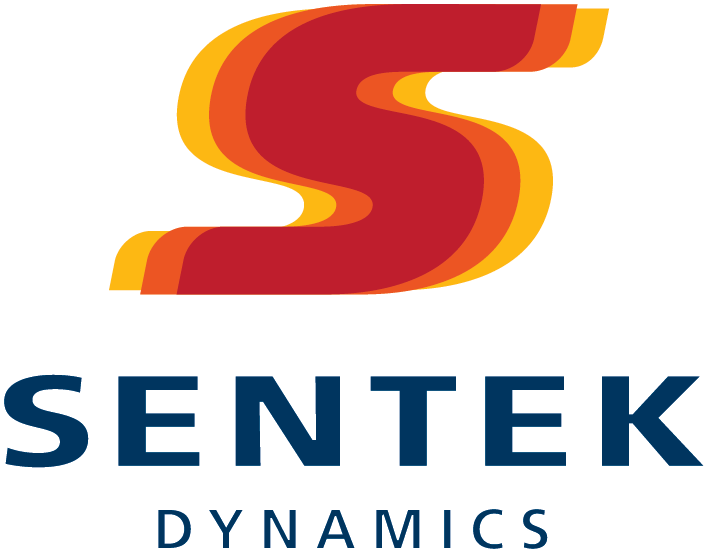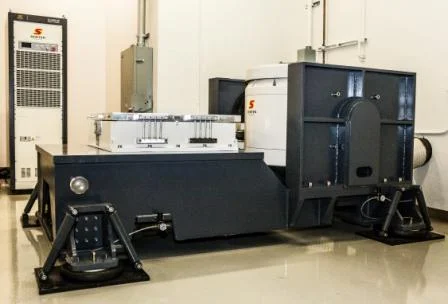Multi-Sine is a new type of Sine test which facilitates multiple sine tones sweeping simultaneously at once. In automotive testing, engine mounted components such as fuel lines, turbos, headers, sensors, heatshield… are all subjected to high vibration levels during their operational life cycle. High cycle fatigue testing of engine mounted components is often done with a standard Swept Sine test. By performing a Swept Sine test, all resonances within the frequency ranges are excited and measured. Since the greatest fatigue damage happens at the excitation frequency and is also potentially high near these resonances, it is important to measure the vibration level at these frequencies. The standard Swept Sine only sweeps one frequency at a time with a single tracking filter. To test for fatigue, multiple sweeps need to be carried out for the entire frequency range at multiple times during a multiple sweeping rate. Using the standard swept sine test, we can estimate the test time as follows with the example criteria:
| - number of target load cycles - resonance frequency width Δf - frequency interval [f0, fmax] |
|---|
This is performed with one single tone at a time: sweeping up/down through the frequency range at the specific sweeping rate.
For a test range between 80 Hz and 2 kHz, 2E6 stress cycle, and 10 Hz resonance width, the test time would be 178.8 hours. The amount of time can be reduced as much as 75% by performing a Multi-Sine test instead. Approved and adopted by many German automobile companies, this method has the advantages of sweeping multiple tones with multiple tracking filters at the same time. If we divide the above test into 10 intervals, with 10 tones sweeping at the same time, this particular test can be completed in 17.88 hours.
There are two types of multi-sine tests: (a) Multi-Sine Type 1, and (b) Multi-Sine Type 2.
For Multi-Sine type 1, there is only one sweep direction and each tone is excited by a delay. The tones are, one by one, excited and swept up. As it reaches the defined interval duration (defined by every 1 Oct/min), a new tone will be excited and swept up. This process is repeated until the total test duration and all frequency range are achieved.
Multi-Sine Type 1 with 3 tones. (Maier, 2009)
Crystal Instruments provides Multi-Sine Type 2 for the Spider Series Vibration Controller System.
In Multi-Sine type 2, all tones are excited at the same time throughout the frequency range, and sweep in both directions.
From the example mentioned previously, we can break up the frequency range into 10 intervals. All intervals will have the same duration per sweep. The first tone from 80 Hz to 110 Hz will require the same amount of time to run per sweep as 110 Hz to 152 Hz, and so on. The interval factor is calculated based on the Interval Factor.
| - Fmax = 2000 Hz, Fmin = 80 Hz, 10 intervals - Interval Factor = 1.3797 |
|---|
From this, the interval of our tones is defined as following:
| Frequency (Hz) | Multiply the Interval Factor | Next Frequency Mark (Hz) | ||
|---|---|---|---|---|
| 80 | 80 x 1.3797 | → | 110 | |
| 110 | ↓ | 110.38 x 1.3797 | 152 | |
| 152 | 152.29 x 1.3797 | 210 | ||
| 210 | 210.11 x 1.3797 | 290 | ||
| 290 | 289.89 x 1.3797 | 400 | ||
| 400 | 399.96 x 1.3797 | 552 | ||
| 552 | 551.82 x 1.3797 | 762 | ||
| 762 | 761.35 x 1.3797 | 1051 | ||
| 1051 | 1050.43 x 1.3797 | 1450 | ||
| 1450 | 1449.28 x 1.3797 | 2000 |
All 10 tones will be excited, ramped up, and will sweep all at once in both directions (up and then down). This is the fundamental idea of Multi-Sine Type 2. This method realized the possibility to cut down testing time by a significant factor. Crystal Instruments currently provides Multi-Sine Type 2 for automobile testing to satisfy the standard requirements.
References
Maier, R. (2009). Environment Tests: Vibration Test, testing of engine attachment parts. BMW Group Standard, 18.



